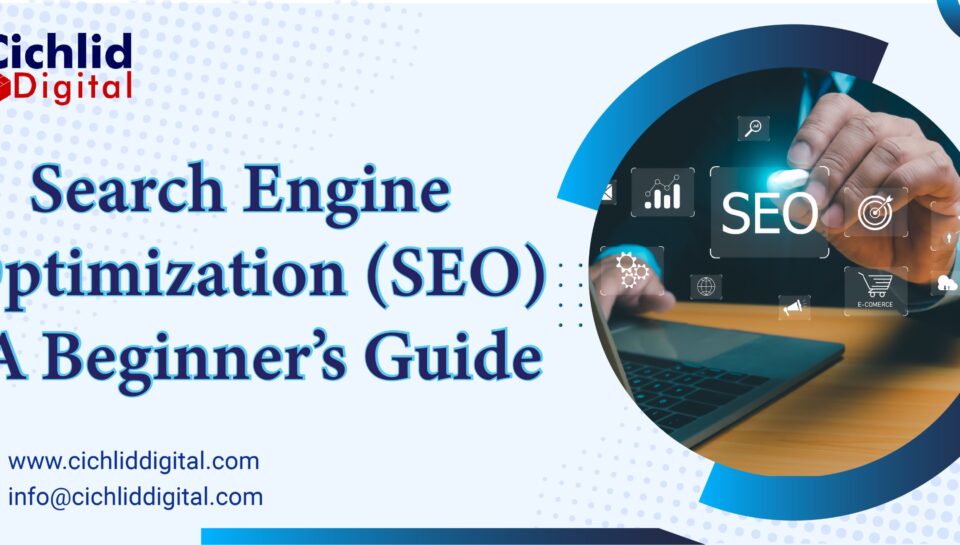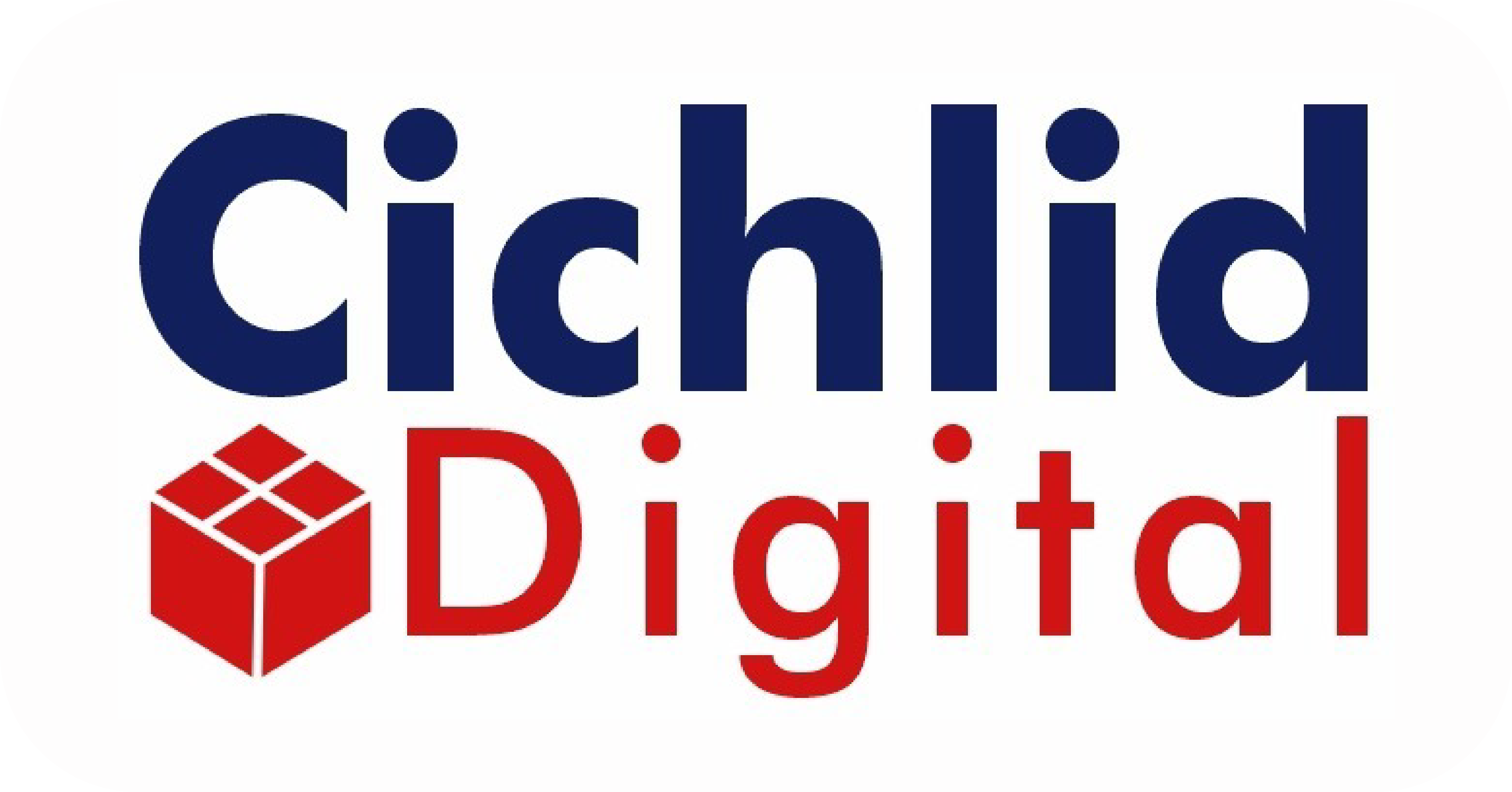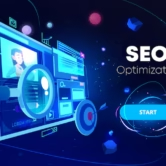- Your cart is empty Browse Shop

In the ever-evolving world of digital marketing, Search Engine Optimization (SEO) remains one of the most effective strategies to drive consistent, long-term organic traffic to your website. But what exactly is SEO, and how does it work? This beginner’s guide explains the fundamentals of SEO, its importance, types, and how you can get started.
What is SEO?
Search Engine Optimization (SEO) is the process of optimizing your website to improve its visibility when people search for products or services related to your business on search engines like Google, Bing, or Yahoo.
SEO is not just about search engines — it’s also about understanding your audience and delivering content that meets their needs. When done correctly, SEO helps your site rank higher on Search Engine Results Pages (SERPs), driving more organic (unpaid) traffic.
How Search Engines Work:
- Crawling: Search engine bots (also called spiders) scan the web for new and updated content.
- Indexing: After crawling, they store and organize content in a vast database.
Ranking: Based on algorithms, content is ranked depending on relevance, authority, and other SEO factors.
Why is SEO Important?
SEO is a long-term investment that delivers compounding returns. Here’s why every business should prioritize SEO:
✅ Increases Visibility
Most users click on one of the top results on Google. Higher rankings mean greater visibility and more chances for users to land on your site.
✅ Drives Organic Traffic
Unlike paid traffic, SEO attracts visitors naturally — people who are actively searching for what you offer.
✅ Builds Trust and Authority
Ranking on the first page of Google increases your credibility. Users trust organic results more than ads.
✅ Offers Long-Term Results
While paid campaigns stop driving traffic the moment your budget ends, SEO continues to deliver results over time.
✅ Cost-Effective Marketing
Once optimized, your content can bring traffic for months or even years — making it more cost-efficient than ongoing ads.
Types of SEO Explained
SEO consists of multiple layers. Understanding these helps you build a solid optimization strategy.
1. On-Page SEO
On-page SEO refers to the optimization of individual web pages to improve ranking and user experience.
- Keyword research and strategic placement
- Compelling meta titles and meta descriptions
- Optimized headings (H1, H2, etc.)
- Image optimization (alt text, size)
- Clean and SEO-friendly URLs
- Internal linking structure
2. Off-Page SEO
Off-page SEO involves activities outside your website to boost its authority and trust.
- High-quality backlinks from reputable sites
- Guest blogging and outreach
- Influencer and brand mentions
- Social media sharing and signals
3. Technical SEO
This ensures that search engines can effectively crawl and index your website.
- Fast loading speed
- Mobile responsiveness
- SSL certificate (HTTPS)
- Properly structured schema markup
- Canonical URLs and crawl budget management
- Fixing broken links and 404 errors
4. Local SEO
For businesses targeting a specific geographic location, local SEO is crucial.
- Google Business Profile optimization
- Accurate NAP (Name, Address, Phone) listings
- Local citations and business directories
- Customer reviews and ratings
- “Near Me” optimization for mobile searches
How Does SEO Work?
Effective SEO involves understanding what people search for and delivering the best solution. Here’s a simplified workflow:
1. Keyword Research
Identify the words and phrases your target audience uses when searching. Use tools like Google Keyword Planner, SEMrush, or Ahrefs to find high-volume, low-competition keywords.
2. Content Creation
Create high-quality, informative, and engaging content around those keywords. Focus on user intent — whether informational, navigational, or transactional.
3. On-Page Optimization
Ensure each page is properly optimized — from titles and headings to images and meta tags.
4. Technical Enhancements
Improve site speed, security, mobile usability, and ensure clean code for easier crawling and indexing.
5. Link Building
Earn authoritative backlinks through guest posts, partnerships, directories, or PR mentions.
6. User Engagement Metrics
Keep users engaged with easy navigation, valuable content, and fast-loading pages. Metrics like bounce rate and time-on-site affect SEO performance.
Key SEO Ranking Factors (Updated for 2025)
Search engine algorithms, especially Google’s, are constantly evolving. As of 2025, the following are among the most important ranking factors:
- Content Relevance & Quality – Original, well-structured content that satisfies search intent.
- Mobile-First Indexing – Google prioritizes mobile versions of websites for ranking.
- Core Web Vitals – Page speed, visual stability, and user interactivity.
- Secure & Accessible Website – HTTPS, clean code, XML sitemap, robots.txt.
- Backlink Profile – Authority and relevance of incoming links.
E-E-A-T – Demonstrating Experience, Expertise, Authoritativeness, and Trustworthiness in your content.
Common SEO Tools You Should Know
Here are some essential tools to streamline your SEO efforts:
- Google Search Console – Monitors website health, indexation, and performance.
- Google Analytics 4 (GA4) – Tracks user behavior, sessions, goals, and conversions.
- SEMrush / Ahrefs – Comprehensive tools for keyword research, backlink audits, and competitive analysis.
- Ubersuggest – Budget-friendly SEO tool for keyword ideas and site audit.
Screaming Frog – Excellent for technical audits and crawling large websites.
SEO Myths vs. Facts
There’s a lot of misinformation about SEO. Let’s clear up a few common myths:
| Myth | Fact |
| SEO is a one-time job | SEO is an ongoing effort |
| Keyword stuffing boosts rankings | Overuse of keywords hurts SEO |
| You’ll see results overnight | SEO usually takes 3–6 months to show impact |
| Buying links helps | Only quality backlinks matter, paid links can be penalized |
How to Get Started with SEO
If you’re new to SEO, follow this step-by-step beginner roadmap:
- Define your target audience and business goals
- Research keywords relevant to your industry
- Write SEO-optimized content
- Optimize technical aspects of your site
- Submit your sitemap to Google Search Console
- Build natural backlinks
- Track rankings and performance using GA4 and GSC
- Continuously update and improve content
💡 Tip: If managing SEO in-house feels overwhelming, you can always hire a reliable SEO agency like Cichlid Digital to handle it for you.
Conclusion
SEO is not just about ranking higher on Google — it’s about connecting with your audience at the right time and offering them exactly what they need. With the right strategy, tools, and consistency, SEO can drive long-term organic growth, improve brand credibility, and boost sales.
🚀 Ready to take your website to the top of search engine results?
Let the experts at Cichlid Digital craft a results-driven SEO strategy tailored to your business goals.
📧 Email: info@cichliddigital.com
📞 Phone: +91-8076465054
🌐 Visit Us: https://www.cichliddigital.com/👉 Contact us today for a free SEO consultation! We’re here to help you grow — organically and sustainably.




